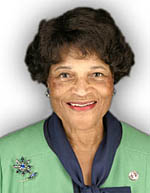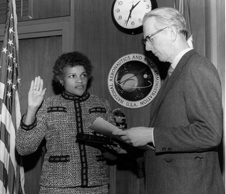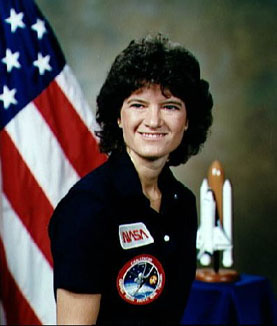
Women's History Month Shout Out: Pearl I. Young


This post is about fighting. Believing. Passion. Success. Standing up, arms flailing if need be.


Dr. Harriett Jenkins worked for NASA from 1974 to 1992 in the Equal Opportunity Programs, paving the pathway that many of us have travelled thus far in our careers. Because of Dr. Jenkins’ work, women, minorities, and disabled persons have a luxury of professional comfort not known during her own upbringing and career. She also worked for the Senate as the director of the Office of Senate Fair Employment Practices, taking her beliefs even further through the government.
I had the pleasure of receiving the fellowship for which she is named (The Harriett Jenkins Pre-doctoral Fellowship) while I was pursuing my own doctorate in a STEM field. During this time, I witnessed the quiet strength and invisible but surely able-to-be-woken feisty personality. Dr. Jenkins could capture you with a simple smile and all ears were hers. Others who worked with her during her tenure would tell stories of Dr. Jenkins, and they inevitably described her fervor and forward-thinking attitude. Her ability to envision and convince. To not only believe in something but also to see it through.
So as a woman at NASA, thank you, Dr. Jenkins. As much as I like to believe that I am solely accountable for my successes of attaining this dream job, I must admit there are many others responsible for the opportunity, even if unbeknownst to me. And I, for one, am thankful.
“All adventures, especially into new territory, are scary.” – Sally Ride

(1951- ) Former astronaut and first American woman in space. Dr. Sally Ride was selected as an astronaut candidate in 1978 and flew for the first time in 1983. After retiring from the astronaut corp, Dr. Ride joined the University of Califorinia at San Diego as a professor and started her own organization called Sally Ride Science to encourage young girls to enter science, math, technology, and engineering fields.
“More women should demand to be involved. It’s our right. This is one area where we can get in on the ground floor and possibly help to direct where space exploration will go in the future.” – Dr. Mae Jemison

(1956- ) American physician and former astronaut who became the first African-American woman in space in 1992. She left NASA in 1993 to start her own company on adapting technology to daily life.